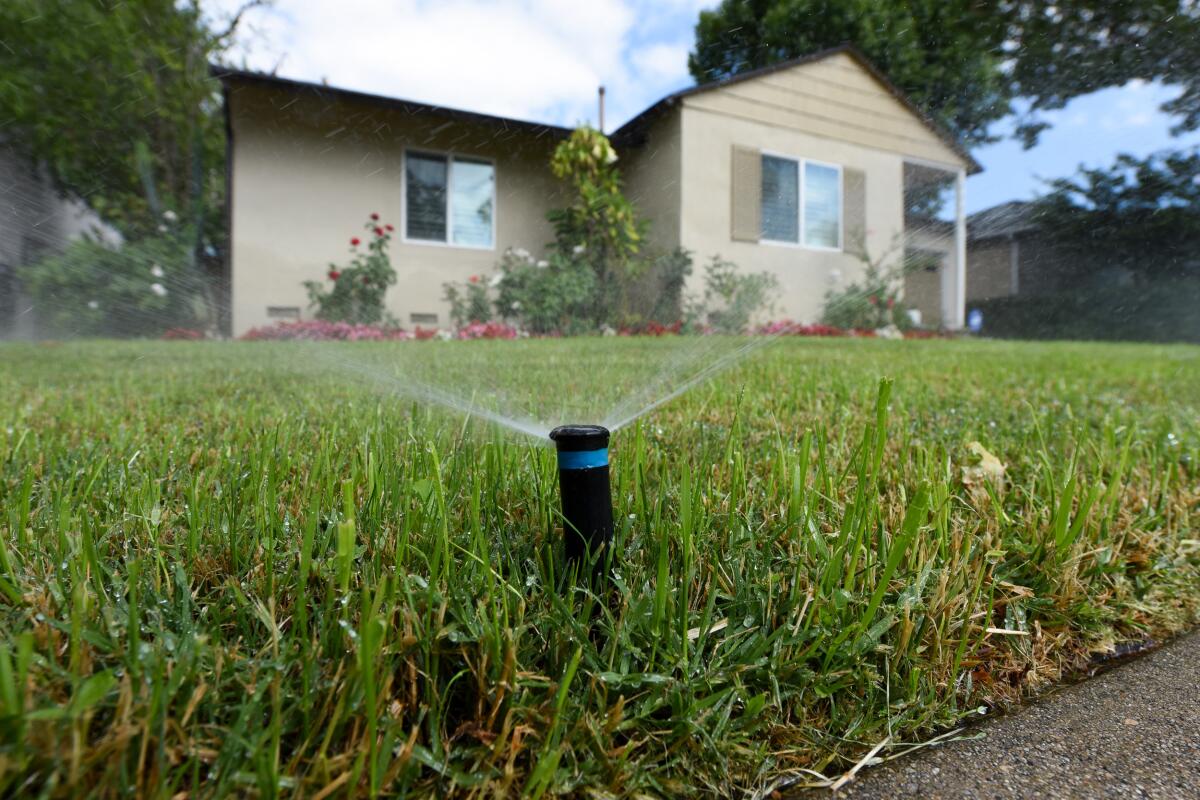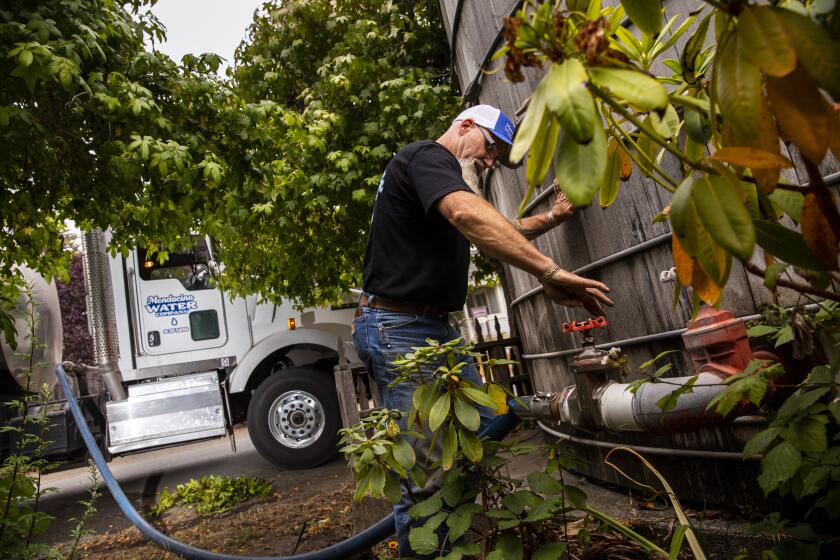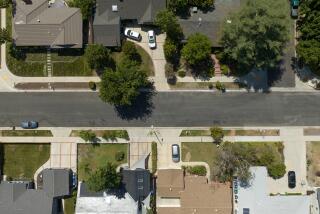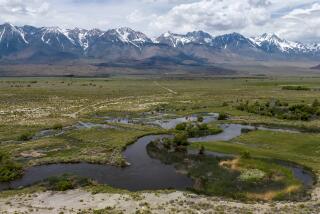As drought worsens, Southland residents face new calls for water conservation

- Share via
As drought conditions worsen, public officials in Southern California are beginning to take steps to conserve dwindling resources.
The Metropolitan Water District of Southern California — one of the largest water distributors in the nation — is weighing whether to declare a supply alert for the first time in seven years, officials said.
And one of its customers, the city of Glendale, this week implemented new mandatory conservation requirements for its residents.
Both moves are largely a response to the region’s shrinking reservoirs and tightening water supplies, officials said. Climate change factors such as extreme heat waves and a critically low snowpack are making adaptation increasingly necessary.
The second-largest California wildfire has burned more than 500,000 acres. See the remains through the smoke and ash.
“It is another indication of just how severe these drought conditions are,” MWD spokeswoman Rebecca Kimitch said.
The agency provides water to 19 million people across six Southern California counties. Reservoir levels in its two imported suppliers — the Colorado River and the State Water Project — are reaching historic lows, she said.
Already, the State Water Project has reduced MWD’s allocation by 95%, officials said. Next year, the allocation could be reduced to zero.
That means more water would have to be pulled from storage supplies at Diamond Valley Lake and Lake Mead, Glendale Water and Power chief assistant general manager Michael de Ghetto said during a City Council meeting this week.
Lake Mead is already at precipitously low levels.
“This is the main reason for coming to council,” de Ghetto said. “To save more water, so we can have more to use next year.”
California resorts to unprecedented water cutoffs as drought worsens. How bad is it?
Glendale council members Tuesday unanimously approved an ordinance that will limit outdoor watering to three days a week — Tuesdays, Thursdays and Saturdays — for no more than 10 minutes at each watering station.
Residents will also see a drought charge of 30 cents per hundred cubic feet, or about 40 cents for 1,000 gallons of water. Those who reduce their water should see no change to their bill, or lower bills depending on how much they conserve.
“I do think that it’s important that we take these drastic measures,” Councilman Ardy Kassakhian said during the meeting.
Though the move is considered Phase Two of Glendale’s mandatory conservation ordinance, Phase One — a no-waste policy — is always in effect, de Ghetto said.
Glendale spokeswoman Annette Baban said the city is the first in Southern California to implement Phase Two restrictions this year, although some districts have taken similar measures in recent years.
Some cities — such as Pasadena and Los Angeles — never lifted their restrictions from previous dry years.
Shasta Lake, once full and surrounded by green banks, is now bordered by a “bathtub ring” that indicates just how far the water has fallen.
Officials said other areas will probably see similar restrictions soon.
In July, Gov. Gavin Newsom called on all Californians to voluntarily reduce water usage by 15%, and 50 of the state’s 58 counties are now under a state of drought emergency.
Northern California, which has been hit particularly hard by extreme drought and recent heat waves, has already seen water restrictions this year. Last week, state regulators passed an emergency regulation that will bar thousands of Californians from diverting stream and river water.
If the MWD board moves forward with an alert declaration next week, it would trigger a regional call to reduce water usage and mitigate the use of stored water. It would also ask water agencies to consider what they can do to help consumers reduce their water use.
“While Southern California continues to have water in storage, we want these reserves to last, should we be facing a prolonged drought,” Kimitch said, noting that “even when the rains return, it will be harder to build back our reserves because our mountains are so dry.”
A water supply alert is the third stage in their four-stage framework, Kimitch said.
Metropolitan last issued a water supply alert in 2014, before moving into an even more restrictive phase in 2015, she said. It was reduced amid the wetter years of 2016 and 2017.
Communities along the Mendocino County coast are heavily reliant on tourists — and on rapidly drying wells for their water.
Beyond conserving water, Glendale is also encouraging residents facing the prospect of dead, brown lawns to consider drought-resistant landscaping and hardscaping options.
“If you drive around the city, you see that there’s great room for improvement,” Kassakhian said. “I think a couple out of the ordinary wet seasons lulled us back into our old bad habits.”
Households that don’t comply with the new ordinance will receive a warning notice, officials said, but repeated violations could result in a fine of up to $1,000.
Glendale previously implemented Phase Two restrictions after then-Gov. Jerry Brown issued mandatory water-use restrictions across the state in 2015.
The city eased those restrictions in 2017, noting at the time that roughly three years of conservation efforts had saved more than 3.6 billion gallons of water.
More to Read
Sign up for Essential California
The most important California stories and recommendations in your inbox every morning.
You may occasionally receive promotional content from the Los Angeles Times.














